#Harold E. Edgerton
Text
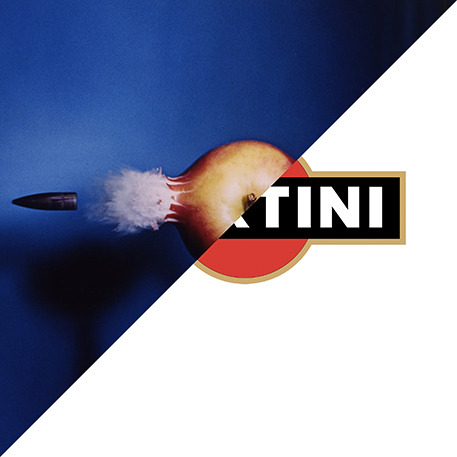
Harold E. Edgerton, Bullet through Apple, 1964
VS
Robilant Associati, Martini & Rossi, logo rebranding, 1995
#apple#Harold E. Edgerton#photo#photography#logo#martini logo#red circle#ball and bar#ball#bar#robilant associati#Martini & Rossi#martini#campari#logo deign#logo rebranding#brand identity#brand
43 notes
·
View notes
Text
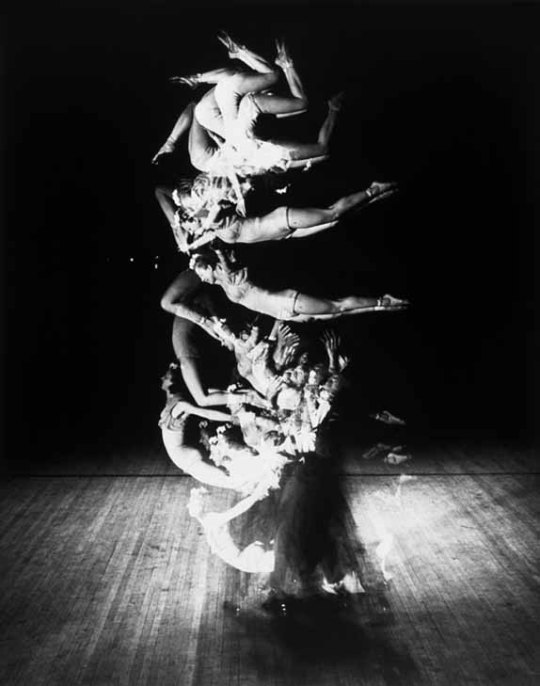
Harold E. Edgerton, Tumblers
* * * *
“The body resembles a sentence that seems to invite us to dismantle it into its component letters, so that its true meanings may be revealed anew through an endless stream of anagrams.”
— Hans Bellmer
[Body Alive]
10 notes
·
View notes
Photo
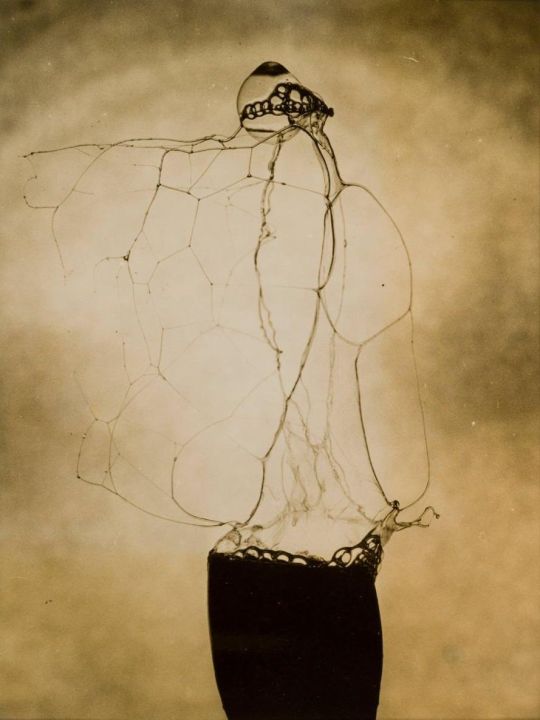
Harold E. Edgerton (USA, 1903 - 1990) - The Collapse of a Soap Bubble (series), n/d.
75 notes
·
View notes
Photo
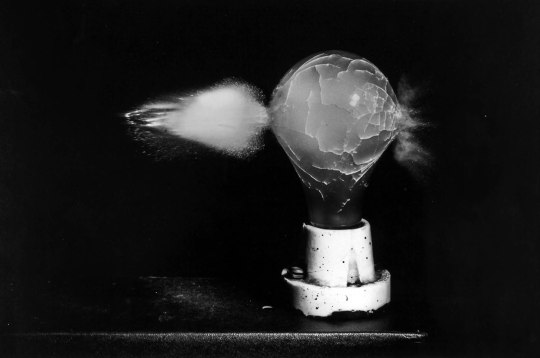
Harold Edgerton. Death of a Light Bulb. 1936
I Am Collective Memories • Follow me, — says Visual Ratatosk
#BW#Black and White#Preto e Branco#Noir et Blanc#黒と白#Schwarzweiß#retro#vintage#Harold Edgerton#Light Bulb#1936#1930s#30s
39 notes
·
View notes
Text
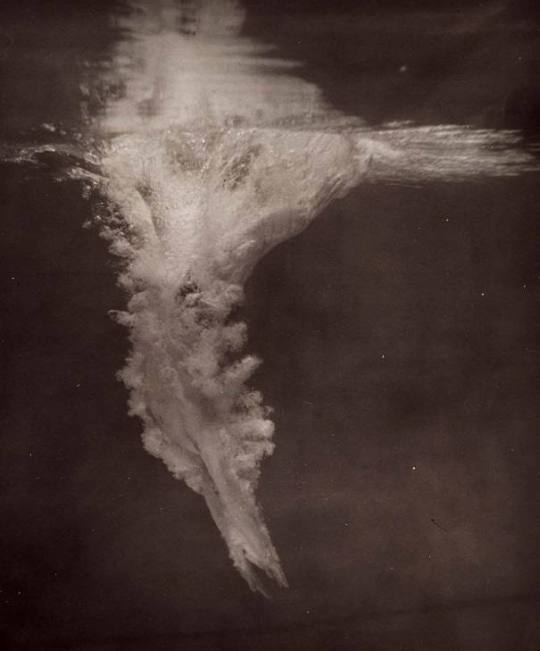
Harold E. Edgerton ~ Diver Underwater, ca. 1940 | src Reina Sofia museo

Leni Riefenstahl ~ Nach dem Sprung (After the Dive), 1936. Olympic games 1936
#divers#harold edgerton#leni riefenstahl#underwater#diving#dive#1930s#1940s#harold eugene edgerton#plunge
90 notes
·
View notes
Text
Erin Kara named Edgerton Award winner
New Post has been published on https://thedigitalinsider.com/erin-kara-named-edgerton-award-winner/
Erin Kara named Edgerton Award winner
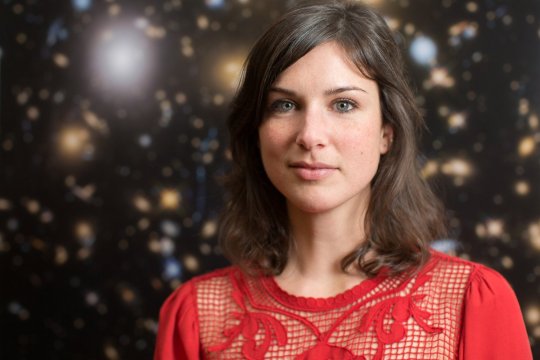

Class of 1958 Career Development Assistant Professor Erin Kara of the Department of Physics has been named as the recipient of the 2023-24 Harold E. Edgerton Faculty Achievement Award.
Established in 1982, the award is a tribute to the late Institute Professor Emeritus Harold E. Edgerton for his support for younger faculty members. This award recognizes exceptional distinction in teaching, research, and service.
Professor Kara is an observational astrophysicist who is a faculty member in the Department of Physics and a member of the MIT Kavli Institute for Astrophysics and Space Research (MKI). She uses high-energy transients and time-variable phenomena to understand the physics behind how black holes grow and how they affect their environments.
Kara has advanced a new technique called X-ray reverberation mapping, which allows astronomers to map the gas falling onto black holes and measure the effects of strongly curved spacetime close to the event horizon. She also works on a variety of transient phenomena, such as tidal disruption events and galactic black hole outbursts.
She is a NASA Participating Scientist for the XRISM Observatory, a joint JAXA/NASA X-ray spectroscopy mission that just launched this past September, and is a NASA Participating Scientist for the ULTRASAT Mission, an ultraviolet all-sky time domain mission, set to launch in 2027. She is also working to develop and launch the next generation of NASA missions, as deputy principal investigator of the AXIS Probe Mission.
“I am delighted for Erin,” says Claude Canizares, the Bruno Rossi Professor of Physics. “She is an exemplary Edgerton awardee. As one of the leading observational astrophysicists of her generation, she has made major advances in our understanding of black holes and their environments. She also plays a leadership role in the design of new space missions, is a passionate and effective teacher, and a thoughtful mentor of graduate students and postdocs.”
Adds Kavli Director Rob Simcoe, “Erin is one of a very rare breed of experimental astrophysicists who have the interest and stamina not only to use observatories built by colleagues before her, but also to dive into a leadership role planning and executing new spaceflight missions that will shape the future of her field.”
The committee also recognized Kara’s work to create “a stimulating and productive multigenerational research group. Her mentorship is thoughtful and intentional, guiding and supporting each student or postdoc while giving them the freedom to grow and become self-reliant.”
During the nomination process, students praised Kara’s teaching skills, enthusiasm, organization, friendly demeanor, and knowledge of the material.
“Erin is the best faculty mentor I have ever had,” says one of her students. “She is supportive, engaged, and able to provide detailed input on projects when needed, but also gives the right amount of freedom to her students/postdocs to aid in their development. Working with Erin has been one of the best parts of my time at MIT.”
Kara received a BA in physics from Barnard College, and an MPhil in physics and a PhD in astronomy from the Institute of Astronomy at Cambridge University. She subsequently served as Hubble Postdoctoral Fellow and then Neil Gehrels Prize Postdoctoral Fellow at the University of Maryland and NASA’s Goddard Space Flight Center. She joined the MIT faculty in 2019.
Her recognitions include the American Astronomical Society‘s Newton Lacy Pierce Prize, for “outstanding achievement, over the past five years, in observational astronomical research,” and the Rossi Prize from the High-Energy Astrophysics Division of the AAS (shared).
The award committee lauded Kara’s service in the field and at MIT, including her participation with the Physics Graduate Admissions Committee, the Pappalardo Postdoctoral Fellowship Committee, and the MKI Anti-Racism Task Force. Professor Kara also participates in dinners and meet-and-greets invited by student groups, such as Undergraduate Women in Physics, Graduate Women in Physics, and the Society of Physics Students.
Her participation in public outreach programs includes her talks “Black Hole Echoes and the Music of the Cosmos” at both the Concord Conservatory of Music and an event with MIT School of Science alumni, and “What’s for dinner? How black holes eat nearby stars” for the MIT Summer Research Program.
“There is nothing more gratifying than being recognized by your peers, and I am so appreciative and touched that my colleagues in physics even thought to nominate me for this award,” says Kara. “I also want to express my gratitude to my awesome research group. They are what makes this job so fun and so rewarding, and I know I wouldn’t be in this position without their hard work, great attitudes, and unwavering curiosity.”
#2023#Admissions#Astronomy#Astrophysics#Awards#honors and fellowships#black hole#Black holes#career#career development#claude#college#cosmos#curiosity#Design#development#disruption#Edgerton#effects#energy#Events#experimental#express#Faculty#flight#Future#gas#Giving#Horizon#how
5 notes
·
View notes
Text
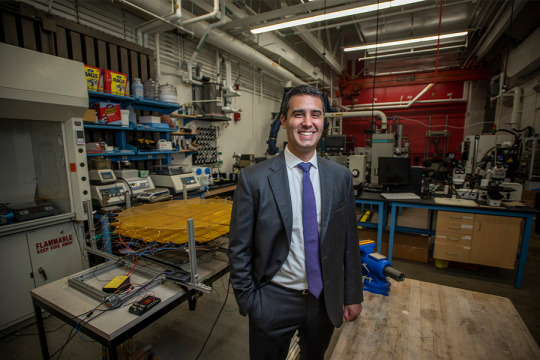
Boosting rocket reliability at the material level
Zack Cordero’s research focuses on extending the lifespan of reusable rockets, while simultaneously reducing the risk of catastrophic failure.
The success of the SpaceX Falcon 9 reusable launch vehicle has been one of the most remarkable technological achievements of the last decade. Powered by SpaceX’s Merlin engine, the Falcon 9 booster can be reused over 10 times, with minimal maintenance between flights.
Now there is a new generation of reusable rocket engines and vehicles that promise much larger payloads and greater reuse. Unlike Falcon 9, the 390-foot-tall SpaceX Starship, powered by its new Raptor engines, can land both the booster and the second stage for reuse, thereby further reducing launch costs. Blue Origin has its own next-generation BE-4 engine that will power its 320-foot New Glenn launch vehicle.
“The new class of reusable launch vehicles is likely to transform the space industry by lowering launch costs and improving space accessibility,” says Zack Cordero, the Esther and Harold E. Edgerton Career Development Assistant Professor of Aeronautics and Astronautics at MIT. “This will enable applications such as mega constellations for space-based internet and space-based sensing for things like persistent, real-time CO2 emissions monitoring.”
Read more.
3 notes
·
View notes
Text
Assistir Filme Gringo - Vivo ou Morto Online fácil
Assistir Filme Gringo - Vivo ou Morto Online Fácil é só aqui: https://filmesonlinefacil.com/filme/gringo-vivo-ou-morto/
Gringo - Vivo ou Morto - Filmes Online Fácil

Funcionário dedicado e marido exemplar, Harold Soyinka (David Oyelowo) leva uma vida pacata em Chicago. Enfrentando problemas financeiros, ele descobre que a empresa em que trabalha está negociando uma fusão que pode resultar em sua demissão. Aos poucos David passa a acreditar nesta possibilidade, devido a atos suspeitos de seu chefe e "melhor amigo" Richard Rusk (Joel Edgerton). Quando Richard e sua sócia Elaine Markinson (Charlize Theron) resolvem acompanhá-lo em uma viagem de trabalho corriqueira ao México, David vê a situação como a oportunidade ideal para fingir ter sido sequestrado e, desta forma, pedir um polpudo sequestro.
2 notes
·
View notes
Text
Erin Kara named Edgerton Award winner
Class of 1958 Career Development Assistant Professor Erin Kara of the Department of Physics has been named as the recipient of the 2023-24 Harold E. Edgerton Faculty Achievement Award.
Established in 1982, the award is a tribute to the late Institute Professor Emeritus Harold E. Edgerton for his support for younger faculty members. This award recognizes exceptional distinction in teaching,…

View On WordPress
0 notes
Text
Erin Kara named Edgerton Award winner
New Post has been published on https://sunalei.org/news/erin-kara-named-edgerton-award-winner/
Erin Kara named Edgerton Award winner

Class of 1958 Career Development Assistant Professor Erin Kara of the Department of Physics has been named as the recipient of the 2023-24 Harold E. Edgerton Faculty Achievement Award.
Established in 1982, the award is a tribute to the late Institute Professor Emeritus Harold E. Edgerton for his support for younger faculty members. This award recognizes exceptional distinction in teaching, research, and service.
Professor Kara is an observational astrophysicist who is a faculty member in the Department of Physics and a member of the MIT Kavli Institute for Astrophysics and Space Research (MKI). She uses high-energy transients and time-variable phenomena to understand the physics behind how black holes grow and how they affect their environments.
Kara has advanced a new technique called X-ray reverberation mapping, which allows astronomers to map the gas falling onto black holes and measure the effects of strongly curved spacetime close to the event horizon. She also works on a variety of transient phenomena, such as tidal disruption events and galactic black hole outbursts.
She is a NASA Participating Scientist for the XRISM Observatory, a joint JAXA/NASA X-ray spectroscopy mission that just launched this past September, and is a NASA Participating Scientist for the ULTRASAT Mission, an ultraviolet all-sky time domain mission, set to launch in 2027. She is also working to develop and launch the next generation of NASA missions, as deputy principal investigator of the AXIS Probe Mission.
“I am delighted for Erin,” says Claude Canizares, the Bruno Rossi Professor of Physics. “She is an exemplary Edgerton awardee. As one of the leading observational astrophysicists of her generation, she has made major advances in our understanding of black holes and their environments. She also plays a leadership role in the design of new space missions, is a passionate and effective teacher, and a thoughtful mentor of graduate students and postdocs.”
Adds Kavli Director Rob Simcoe, “Erin is one of a very rare breed of experimental astrophysicists who have the interest and stamina not only to use observatories built by colleagues before her, but also to dive into a leadership role planning and executing new spaceflight missions that will shape the future of her field.”
The committee also recognized Kara’s work to create “a stimulating and productive multigenerational research group. Her mentorship is thoughtful and intentional, guiding and supporting each student or postdoc while giving them the freedom to grow and become self-reliant.”
During the nomination process, students praised Kara’s teaching skills, enthusiasm, organization, friendly demeanor, and knowledge of the material.
“Erin is the best faculty mentor I have ever had,” says one of her students. “She is supportive, engaged, and able to provide detailed input on projects when needed, but also gives the right amount of freedom to her students/postdocs to aid in their development. Working with Erin has been one of the best parts of my time at MIT.”
Kara received a BA in physics from Barnard College, and an MPhil in physics and a PhD in astronomy from the Institute of Astronomy at Cambridge University. She subsequently served as Hubble Postdoctoral Fellow and then Neil Gehrels Prize Postdoctoral Fellow at the University of Maryland and NASA’s Goddard Space Flight Center. She joined the MIT faculty in 2019.
Her recognitions include the American Astronomical Society‘s Newton Lacy Pierce Prize, for “outstanding achievement, over the past five years, in observational astronomical research,” and the Rossi Prize from the High-Energy Astrophysics Division of the AAS (shared).
The award committee lauded Kara’s service in the field and at MIT, including her participation with the Physics Graduate Admissions Committee, the Pappalardo Postdoctoral Fellowship Committee, and the MKI Anti-Racism Task Force. Professor Kara also participates in dinners and meet-and-greets invited by student groups, such as Undergraduate Women in Physics, Graduate Women in Physics, and the Society of Physics Students.
Her participation in public outreach programs includes her talks “Black Hole Echoes and the Music of the Cosmos” at both the Concord Conservatory of Music and an event with MIT School of Science alumni, and “What’s for dinner? How black holes eat nearby stars” for the MIT Summer Research Program.
“There is nothing more gratifying than being recognized by your peers, and I am so appreciative and touched that my colleagues in physics even thought to nominate me for this award,” says Kara. “I also want to express my gratitude to my awesome research group. They are what makes this job so fun and so rewarding, and I know I wouldn’t be in this position without their hard work, great attitudes, and unwavering curiosity.”
0 notes
Text
ICP Exhibition - 3/24/24
The International Center of Photography has a variety of photographs from political views, historical fashion, to contemporary, and mysterious. There were more than three hundred pictures with different sizes and ways of installation. Every photo had a brief description walking you through the photograph and its meaning and even some of the techniques used. The description also states the photographer (if known) and the year they were born and or deceased, the title of the photo (if known), the year taken or printed, the location of the photograph (if known), and at times, the thoughts of the photographer. They also list how ICP obtained the photograph, whether through purchase, donations, etc.. The atmosphere was quiet, people were taking their time reading descriptions of photos and discussing them through whispers. The lights on the third floor were dim, there were spotlights on the walls, where the photos were displayed.The third floor also held older pictures going back to the 1848, historic pictures, they were mainly black and white photos. The second floor was bright, the lights were on, and most of the pictures were colored. The second floor also held more contemporary, and fashionable photos, as well as hipsters photographs. The newer photos were displayed on the second floor, they were mainly from the 1980's on.
It was so hard to pick only two pictures, but after going through the list a few times, I decided to pick two that are somehow modern. The first photo of my choice was by Ming Smith, born in Detroit in 1947. The photo is called Womb, it was taken in 1992 and printed in 2023. Pigment print was used and it was purchased by funds provided by the acquisition committee of ICP 1/18/2023. Womb is a double exposure photograph. This means the negative in the cameras was exposed twice, where two different pictures are printed on top of each other. The photo is unique when seeing, you can observe the pyramids right away and two young boys in front of them, when you tilt your head to the right you can see a portrait of one of the boys horizontally across the photograph of the pyramids.
“While Smith has employed a wide range of styles and techniques throughout her career, this work typifies her experimental approach, using intuition and chance to imbue her images with a dreamy, often otherworldly impression. Smith, who made photographs at an early age with her father's Brownie camera, began her professional career as a model. After being photographed by Anthony Barboza, she met other members of the Kamoinge Workshop-a collective of Black photographers founded in 1963 in New York City-and began to forge her own career as an artist. In 1975, a few months after ICP opened to the public, Smith, alongside other members of the Kamoinge group, were exhibited”.
The second photo of my choice was by Carrie Mae Weems, born in Portland, Oregon in 1953. The photo is called Mirror, Mirror and was taken in 1987, and Gelatin silver print was used. ICP obtained the photo as a gift from Julie Ault in 2001. The photograph reads “”LOOKING INTO THE MIRROR, THE BLACK WOMAN ASKED, "MIRROR, MIRROR ON THE WALL, WHO'S THE FINEST OF THEM ALL?" THE MIRROR SAYS, "SNOW WHITE, YOU BLACK BITCH, AND DON'T YOU FORGET IT!!!"”. I sensed the picture having a dark humor that actually reminded me of Deborah Willis’s article about some blacks believing that whites are more beautiful than blacks.
The list of photographers is long, in addition of the previous two, so I selected some just as examples:
Mickalene Thamas
A.K Burns
Harold Eugene Edgerton
Carol Summers
Lee Friedlander
Lucas Samaras
Charles E. Stacy
Florence Henri
Custav Klutsis
Lotte Jacobi
Julia Pirotte
Ilse Bing
Nasa
Cornell Capa
Jacob Riis
Daivd Seidner
These photographers are from all over the world.

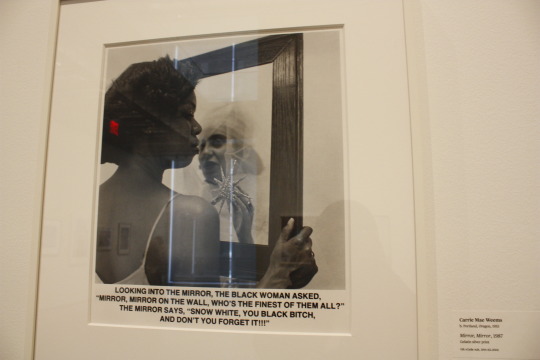
0 notes
Text

Harold E. Edgerton
Rising Dove
1934
* * * * *
I saw the dove come down, the dove with the green twig, the childish dove out of the storm and flood. It came toward me in the style of the Holy Spirit descending. I had been sitting in a cafe for twenty-five years waiting for this vision. It hovered over the great quarrel. I surrendered to the iron laws of the moral universe which make a boredom out of everything desired. Do not surrender, said the dove. I have come to make a nest in your shoe. I want your step to be light.
— Leonard Cohen
[alive on all channels]
6 notes
·
View notes
Text

Harold E. Edgertons photo, Bullet through Apple shot in 1964 is a photo i like because of the use of low shutter speed creating a photo stuck in time. Edgerton is commonly associated to bringing flash photography forward, and his photos all have an experimental quality to them that i admire.
0 notes
Text

Harold E. Edgerton, Bullet through Apple, 1964, printed 1984, dye transfer print, sheet: 16 x 20 in. (40.7 x 50.8 cm.)
1 note
·
View note
Text
Biogel Armour Can Stop a Supersonic Projectile in Its Tracks
A protein found in human cells has been repurposed to make a material that reforms when it is struck by a projectile, capturing the object intact
— Chemistry | 13 December 2022 | By Carissa Wong

Not all materials can stop a projectile! Harold E. Edgerton/Smithsonian American Art Museum
A gel made of a protein found in human cells can capture particles travelling at supersonic speeds without destroying them on impact, suggesting the material could be used in body armour or for collecting space debris.
Our cells contain a protein called talin that helps them sense and navigate their local environment in the body by changing structure in response to external forces. Benjamin Goult and his colleagues at the University of Kent, UK, have made a talin-based gel that reforms after it …
— News Scientist
0 notes
Text
New major crosses disciplines to address climate change
New Post has been published on https://thedigitalinsider.com/new-major-crosses-disciplines-to-address-climate-change/
New major crosses disciplines to address climate change
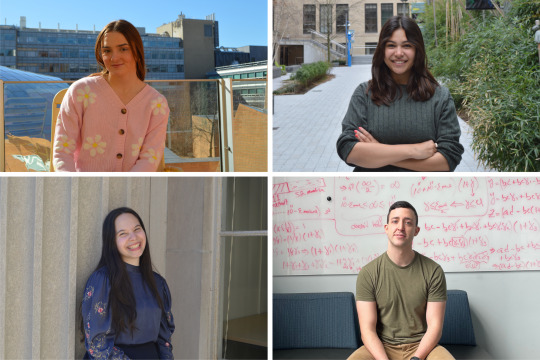

Lauren Aguilar knew she wanted to study energy systems at MIT, but before Course 1-12 (Climate System Science and Engineering) became a new undergraduate major, she didn’t see an obvious path to study the systems aspects of energy, policy, and climate associated with the energy transition.
Aguilar was drawn to the new major that was jointly launched by the departments of Civil and Environmental Engineering (CEE) and Earth, Atmospheric and Planetary Sciences (EAPS) in 2023. She could take engineering systems classes and gain knowledge in climate.
“Having climate knowledge enriches my understanding of how to build reliable and resilient energy systems for climate change mitigation. Understanding upon what scale we can forecast and predict climate change is crucial to build the appropriate level of energy infrastructure,” says Aguilar.
The interdisciplinary structure of the 1-12 major has students engaging with and learning from professors in different disciplines across the Institute. The blended major was designed to provide a foundational understanding of the Earth system and engineering principles — as well as an understanding of human and institutional behavior as it relates to the climate challenge. Students learn the fundamental sciences through subjects like an atmospheric chemistry class focused on the global carbon cycle or a physics class on low-carbon energy systems. The major also covers topics in data science and machine learning as they relate to forecasting climate risks and building resilience, in addition to policy, economics, and environmental justice studies.
Junior Ananda Figueiredo was one of the first students to declare the 1-12 major. Her decision to change majors stemmed from a motivation to improve people’s lives, especially when it comes to equality. “I like to look at things from a systems perspective, and climate change is such a complicated issue connected to many different pieces of our society,” says Figueiredo.
A multifaceted field of study
The 1-12 major prepares students with the necessary foundational expertise across disciplines to confront climate change. Andrew Babbin, an academic advisor in the new degree program and the Cecil and Ida Green Career Development Associate Professor in EAPS, says the new major harnesses rigorous training encompassing science, engineering, and policy to design and execute a way forward for society.
Within its first year, Course 1-12 has attracted students with a diverse set of interests, ranging from machine learning for sustainability to nature-based solutions for carbon management to developing the next renewable energy technology and integrating it into the power system.
Academic advisor Michael Howland, the Esther and Harold E. Edgerton Assistant Professor of Civil and Environmental Engineering, says the best part of this degree is the students, and the enthusiasm and optimism they bring to the climate challenge.
“We have students seeking to impact policy and students double-majoring in computer science. For this generation, climate change is a challenge for today, not for the future. Their actions inside and outside the classroom speak to the urgency of the challenge and the promise that we can solve it,” Howland says.
The degree program also leaves plenty of space for students to develop and follow their interests. Sophomore Katherine Kempff began this spring semester as a 1-12 major interested in sustainability and renewable energy. Kempff was worried she wouldn’t be able to finish 1-12 once she made the switch to a different set of classes, but Howland assured her there would be no problems, based on the structure of 1-12.
“I really like how flexible 1-12 is. There’s a lot of classes that satisfy the requirements, and you are not pigeonholed. I feel like I’m going to be able to do what I’m interested in, rather than just following a set path of a major,” says Kempff.
Kempff is leveraging her skills she developed this semester and exploring different career interests. She is interviewing for sustainability and energy-sector internships in Boston and MIT this summer, and is particularly interested in assisting MIT in meeting its new sustainability goals.
Engineering a sustainable future
The new major dovetail’s MIT’s commitment to address climate change with its steps in prioritizing and enhancing climate education. As the Institute continues making strides to accelerate solutions, students can play a leading role in changing the future.
“Climate awareness is critical to all MIT students, most of whom will face the consequences of the projection models for the end of the century,” says Babbin. “One-12 will be a focal point of the climate education mission to train the brightest and most creative students to engineer a better world and understand the complex science necessary to design and verify any solutions they invent.”
Justin Cole, who transferred to MIT in January from the University of Colorado, served in the U.S. Air Force for nine years. Over the course of his service, he had a front row seat to the changing climate. From helping with the wildfire cleanup in Black Forest, Colorado — after the state’s most destructive fire at the time — to witnessing two category 5 typhoons in Japan in 2018, Cole’s experiences of these natural disasters impressed upon him that climate security was a prerequisite to international security.
Cole was recently accepted into the MIT Energy and Climate Club Launchpad initiative where he will work to solve real-world climate and energy problems with professionals in industry.
“All of the dots are connecting so far in my classes, and all the hopes that I have for studying the climate crisis and the solutions to it at MIT are coming true,” says Cole.
With a career path that is increasingly growing, there is a rising demand for scientists and engineers who have both deep knowledge of environmental and climate systems and expertise in methods for climate change mitigation.
“Climate science must be coupled with climate solutions. As we experience worsening climate change, the environmental system will increasingly behave in new ways that we haven’t seen in the past,” says Howland. “Solutions to climate change must go beyond good engineering of small-scale components. We need to ensure that our system-scale solutions are maximally effective in reducing climate change, but are also resilient to climate change. And there is no time to waste,” he says.
#2023#air#air force#Atmospheric chemistry#awareness#Behavior#Building#carbon#carbon cycle#career#career development#career path#Careers#challenge#change#chemistry#Civil and environmental engineering#classes#Classes and programs#climate#climate change#climate crisis#climate science#computer#Computer Science#course#data#data science#Design#development
0 notes